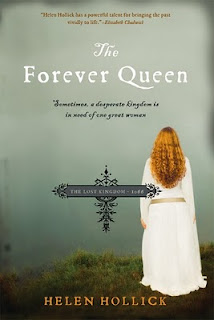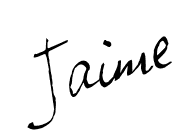Medieval Holiday Traditions
The earliest known reference dating the festival of the Nativity as December 25th is found in an illuminated manuscript compiled in Rome - the Chronography of 354. In the East, early Christians celebrated the birth of Christ as part of Epiphany (January 6), the date we now celebrate as 12th night. The “Christmas” feast, became more established by about 400. The belief that Christ was actually born on 25th December is, of course, untrue, for one thing, the Bible clearly states lambs being born – this is a Spring event, not one for mid-winter. However, the Pagan celebrations of birth and renewal, of Light, of life triumphing over death were centered around the Winter Solstice (usually 21st December) when the re-birth of the sun was celebrated after the longest night/shortest day. Basically, the Christian Church adapted this Pagan feast to their own needs and incorporated many of the Pagan beliefs. Light, candles, greenery, feasting etc.Yule or Yuletide was celebrated from late December to early January, a festival of the Germanic peoples and the “Vikings”. There is also a connection with the Roman winter festival of Saturnalia. Bede in about AD 730, recorded that the Anglo-Saxon calendar included the months geola or giuli corresponding with either modern December or December and January. He gave December 25 as the first day of the heathen year and wrote that the Pagan Anglo-Saxons celebrated all night long to honour the divine mother – another connection between the Christian Nativity and Pagan belief - birth and motherhood.
The Ynglinga Saga first mentions a Yule feast in 840 and after 1000, it has become the main feast of the year. The Saga of Hákon the Good credits King Haakon I of Norway (c.935-961) with the Christianization of Norway, as well as placing the date of Yule to coincide with the Nativity. Previously, Yule had been celebrated on midwinter night for three nights. It was a time of feasting, drinking and merry-making. For the Germanic tribes, Odin was associated with Yule, along with the tradition of the Wild Hunt
Burning the Yule log is a custom that was an integral part of the solstice celebration, signifying the rebirth of light at the darkest time of the year. Evergreens were an important symbol; in ancient Rome they were thought to have special powers and were used for decoration promising the return of life in the spring. Holly, ivy and mistletoe were important plants, for it was believed that good spirits lived in the branches of holly and Christians believed that the berries had been white before they were turned red by Christ's blood. Ivy was associated with the Roman god Bacchus, and was not allowed by the Church as decoration until later in the middle ages, when a superstition that it could help recognize witches and protect against the plague arose.
Wassail is the Old English waes hael which means "be well" or "good health." A strong, hot drink (usually a mixture of ale, honey, and spices) would be put in a large bowl and the host would lift it and greet his companions with a loud "waes hael!" to which they would reply "drinc hael!" - "drink and be well."
For entertainment, minstrels played on lyre or harp, and musicians would have pipes, and bagpipes (probably the same as modern “under arm” Irish or Northumbrian pipes, not the Scots bagpipe that is blown) Horns, trumpets, drums and flutes completed the “orchestra” – accompanied by singing of course. Possibly, the lighter lyres and harps were played during the serving of the feast meal, while the louder instruments served for “after dinner entertainment.” There would have been dancing, juggling and jesting. Story telling, and riddle-weaving.
How about this one?
He who struggles with me and strives against my power,
Still persisting in his folly soon finds out that his back must bite earth.
Stripped of strength,
Strident of speech,
Robbed of might,
He can master neither mind, not foot, nor hand.
Find my name,
Who thus by light of day on earth can bind men dulled by blows.
(answer below!)
It is not too much of a leap of imagination to assume that Emma would have donned her finest, brightest garments at Yule Tide and after partaking of Mass in the Minster at Winchester would look forward to enjoying the gaiety of feasting and dancing.
The great hall - something like 80 feet long by 40 feet wide - would be furnished with trestle tables and benches; the high table, at least, having a linen table cloth and napkins. Furs and embroidered and woven hangings would decorate the walls, while garlands of evergreen would be strung from rafter to rafter; the Yule Log dragged in and set afire in the hearth place. Candles and lanterns everywhere flickering a dancing light.
Good manners were expected. It was not considered polite to bolt or gobble your food, nor was it the “done thing” to pick up any morsel that had fallen to the floor and eat it (anyway the dogs or chickens would probably have got there first! Chickens can move pretty fast!) Nor was it polite to pick your nose or scratch your backside and then put your hand into a bowl of food to select, say, a wing of chicken or a succulent piece of roasted pork – crisp with crunchy crackling!
Feast day food was looked forward to and enjoyed, rarer cuts and speciality dishes were expected. Poultry and pork, beef – lamb and sheep not so much, probably because pork and beef fatten more easily. Game, such as venison and hare taken by hunting and fowling were suited for feasting as they were rarer meats. Bread was a standard part of any meal, while a number of festival cakes with enriched dough were known.
Day long feasts were common and it was considered bad practice to leave before the end – the three day feast seems to have been common for the special occasions.
Drink too, was important. Ale, beer, mead, cider and wine.
We do not know if gifts were exchanged: I like to think that Cnut and Emma gave something special to each other on the eve of Christmas though. A brooch perhaps, or a fine-made, carved walrus ivory comb?
waes hael!
(the answer to the riddle is ‘Mead’)
THE FOREVER QUEEN BY HELEN HOLLICK – IN STORES NOVEMBER 2010

What kind of woman becomes the wife of two kings, and the mother of two more?
Saxon England, 1002. Not only is Æthelred a failure as King, but his young bride, Emma of Normandy, soon discovers he is even worse as a husband. When the Danish Vikings, led by Swein Forkbeard and his son, Cnut, cause a maelstrom of chaos, Emma, as Queen, must take control if the Kingdom—and her crown—are to be salvaged. Smarter than history remembers, and stronger than the foreign invaders who threaten England’s shores, Emma risks everything on a gamble that could either fulfill her ambitions and dreams or destroy her completely.
Emma, the Queen of Saxon England, comes to life through the exquisite writing of Helen Hollick, who shows in this epic tale how one of the most compelling and vivid heroines in English history stood tall through a turbulent fifty-year reign of proud determination, tragic despair, and triumph over treachery.
ABOUT THE AUTHOR

Helen Hollick lives in northeast London with her husband, daughter and a variety of pets, which include several horses, cats and two dogs. She has two major interests: Roman / Saxon Britain and the Golden Age of Piracy--the early eighteenth century. Sourcebooks Landmark will release the next chapter on Helen’s 1066 saga, I Am the Chose King, in Spring 2011. For more information, please visit http://www.helenhollick.net/.
AND There's more!!! With a huge thanks to Danielle at Sourcebooks for a) bringing such an amazing author in to my life and b) for sponsoring a giveaway for TWO copies of "The Forever Queen".
Rules:
US and Canada only!
No PO Boxes
Leave a comment with your email address with an answer to this question:
Reading the holiday traditions of the people during the medieval period, what are your favorite traditions?
Thank you and good luck!
Giveaway ends December 15th, winners will be chosen through random.org and winners will be contacted via email!
***Please note, duplicate entries will be deleted. All comments go into a moderation queue so please do not continue to submit after the first submission, it will go through***





